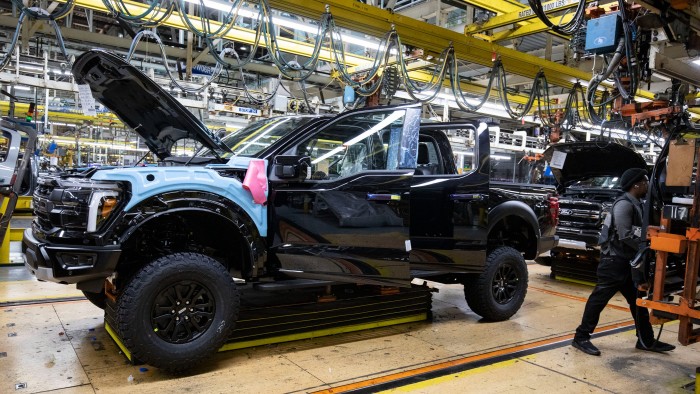Trump’s New Trade Policy: Tariff Relief for U.S. Automakers
In a significant move aimed at bolstering the U.S. auto industry, President Donald Trump recently introduced adjustments to the current tariff structure, providing crucial relief for some major car manufacturers. This policy shift comes as he emphasizes the need for domestic production within the automotive sector.
Key Features of the New Tariff Policy
- Temporary Tariff Relief: Manufacturers will receive exemptions from the steepest tariffs, as well as rebates for vehicles assembled in the U.S.
- Executive Order Signed: Trump formalized these changes via an executive order during a visit to Michigan, marking his 100th day in office.
- Rebates on Tariffs: Automakers that produce their vehicles in the U.S. can reclaim up to 3.75% of the value of their vehicles for the next year.
- Continuation of Previous Tariffs: A 20% tariff on imports from China remains in effect, while compliant parts from Canada and Mexico retain tariff-free status.
Rationale Behind Tariff Adjustments
While celebrating his administration’s efforts to support the automotive sector, Trump remarked, “I’m giving them a little bit of a break,” to a crowd of supporters. This statement reflects an overall strategy to encourage manufacturers to produce parts domestically. However, he added, “We give them a little time before we slaughter them if they don’t do this right,” indicating a firm stance on compliance.
Industry Reactions
The response from industry leaders has been largely positive. Executives from companies like General Motors (GM), Ford, and Stellantis expressed appreciation for the relief measures. Stellantis chair John Elkann stated, “We look forward to our continued collaboration with the U.S. administration to strengthen a competitive American auto industry and stimulate exports.”
Mary Barra, CEO of GM, emphasized the importance of Trump’s leadership in leveling the playing field, allowing for greater investment in the U.S. economy. Ford also acknowledged that the new decisions would help alleviate some financial pressures faced by automakers, suppliers, and consumers alike.
Impact on the Automotive Landscape
This new policy arrives at a critical moment, following extensive lobbying from the automotive industry, which had expressed concerns about the heightened costs associated with tariffs. Just a few days prior, the administration had planned to implement a 25% tariff on imported car parts, prompting the urgency for this revision of the trade policy.
Though the measures introduce some simplification to the existing tariff regime, many executives have noted that the overall structure remains complex. Additionally, the changes are accompanied by a phasing out of rebates starting in 2026, which may require further adjustments from manufacturers.
Conclusion
The recent adjustments to the tariff policy reflect Trump’s ongoing commitment to foster growth within the U.S. auto industry while navigating the complexities of international trade. As discussions move forward, it will be crucial for manufacturers to align their strategies with these changing regulations to sustain production and competitiveness in the U.S. market.


